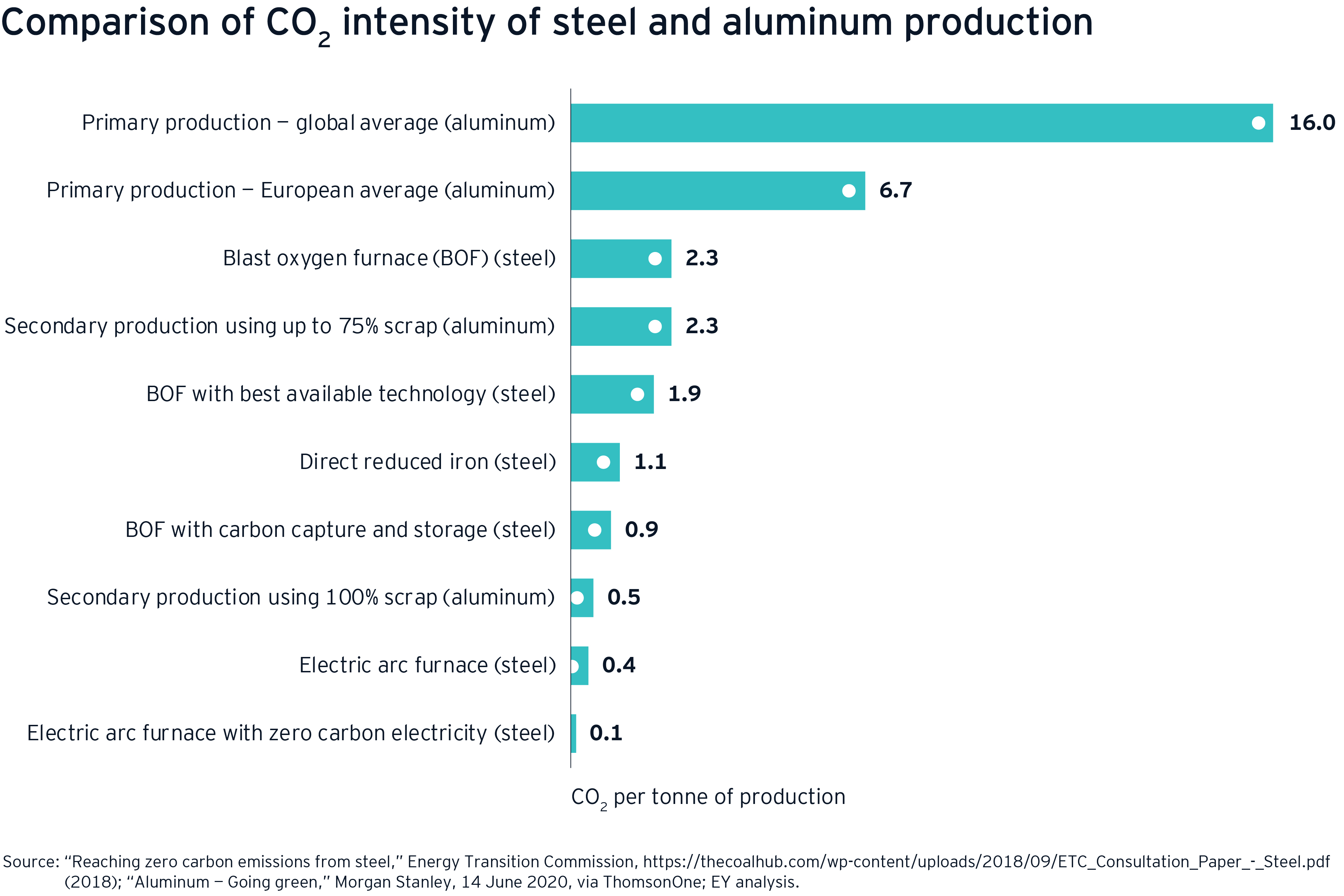Globally, adoption of electric vehicles (EVs) is increasing fast. In 2019, around 7.2 million EVs were on the world’s roads, up from just 17,000 in 2010. In at least 20 countries, led by China, EVs reached over 1% of the market share of new vehicle sales.1 Studies suggest that within 10 to 15 years, most forms of urban transport, including buses, taxis, trucks and personal vehicles, will be electric. And, according to the EY Mobility Lens Forecaster, EV sales across the US, Europe and China will surpass the sale of both internal combustion engine (ICE) and fully hybrid vehicles by 2033.
This critical inflection point for the transportation industry also has major implications for the industries that supply it, including mining and metals. Metals with relatively small markets (such as lithium, nickel, cobalt and graphite) are projected to explode in size as EV demand increases. In a scenario where 100% of vehicles are EVs, demand for metals, such as lithium and cobalt, is likely to be 20 times higher than today.2
As well as changes in demand, mining and metals companies also need to consider the impact of car manufacturers’ initiatives to reduce emissions at every stage of the value chain. A growing expectation of low-carbon products is pushing the mining and metals sector toward greater adoption of renewable energy and sustainable production techniques, including electrification of mines and assessing greener alternatives.
Electrification of transport offers opportunities across commodities
A powerful combination of industry initiatives and government action, including increasingly stringent emissions regulation, has resulted in a paradigm shift toward eMobility. The electrification of transport is integral to our energy transition and will impact the entire automotive value chain. This offers tremendous opportunities for the mining and metals sector.
But meeting the requirements for more EVs, batteries and infrastructure will also have significant implications on producers of the metals and minerals used to build them.
Steel and aluminium
Steel demand from the automotive sector is expected to remain flat. The reduced volume of steel required for each EV is likely to be offset by the incremental volumes of EVs produced.
Aluminium is projected to see a net incremental demand increase as EV production ramps up. If we consider a midpoint estimate of 250kg per EV with 30 million EVs, the aluminium demand from EVs only will equate to 7.5mt by 2030.3 As EV penetration grows, battery production and charging infrastructure must grow in tandem, and both will require a significant amount of both steel and aluminium.
How much an EV weighs is a critical factor in its efficiency, which affects its range and appeal to customers. For example, it’s estimated that for every 100kg saved, an EV’s mileage increases by 10% to 11% and reduces battery costs by 20%.4 When lighter materials, such as aluminium, are used to make EV car bodies, this can help offset the weight of batteries. However, as battery technologies evolve, both the cost and weight are declining, leading companies to consider using steel for some applications in low-cost segments. Advanced high-strength steel (AHSS) is increasingly popular with automotive producers due to its ability to provide sustainable lightweight construction – reducing the average weight of a vehicle by 25% to 39% and saving approximately 4.5 tonnes of greenhouse gas emissions over a vehicle’s life cycle.5
Key action for steelmakers:
- Continue to innovate, as the development of advanced steel products will remain key to capturing incremental market share in the automotive industry. For example, Tesla has recently shifted from using aluminium to a steel-aluminium blend in the construction of the body and chassis of its mass-market Tesla Model 3.
Key action for aluminium producers:
- Focus on reducing carbon emissions to remain competitive, particularly as OEMs look for substitutes to reduce production-phase emissions. Producers are already increasing investments in recycled or low-carbon metals made with renewables. For example, Hydro’s CIRCAL, which is 75% recycled aluminium, and REDUXA, a low-carbon aluminium, both offer sustainable alternatives to traditional aluminium.6


